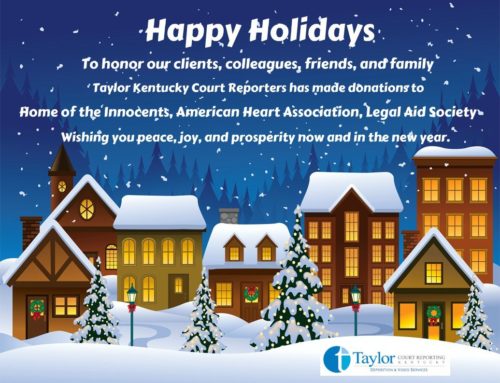Attorneys: More Tips to Getting the Best from Real-time Court Reporters
Attorneys taking advantage of real-time court reporters benefit from having an instant translation of testimony at their disposal. How can attorneys get the most out of a real-time setup while making the best possible record?
As experienced court reporters providing real-time translations to attorneys, we’d like to suggest the following tips for getting the best from real-time court reporters:
1. When bringing your own laptop to a deposition or other proceeding, it’s important to make prior arrangements with the court reporter or the court reporting agency to check for connectivity issues; on-site troubleshooting may be necessary and software or drivers may need to be loaded to your laptop, possibly causing a delay in the proceedings.
2. Court reporters use different brands of real-time software, so reach out to your court reporter and ask what real-time software they’ll be using. The real-time court reporters at Taylor Court Reporters KY use iCVNet software from Stenograph, which is free for attorneys to download from the iTunes store.
3. For ease of use, plan on using an iPad or other device provided by your real-time court reporter. Typically, real-time court reporters will have their own devices set up and ready to go before you arrive.
4. When giving your opening introduction and instructions to the witness, speak slowly and clearly. The court reporter will appreciate this as a chance to warm up and get familiar with speaking styles.
5. Remember, court reporters write what they hear, so if you think your court reporter may not have heard a word, phrase or number correctly, ask the witness or attorney to repeat or clarify their question or response. Thick accents and fast talking can make it difficult for the court reporter to keep up, so slow down and be patient if the court reporter asks for a clarification.
6. Be sure when using numbers to say the whole number and any adjectives that will help the court reporter better understand how to transcribe them. For example, you may say “six four sixteen,” real-time court reporters may not know if you mean a date, 6/4/16 or a dollar amount, $64.16 or an item, 6418. Whenever possible, use identifiers by saying date, dollar, and item.
7. Real-time court reporters need frequent breaks to stretch, clear their head, and do a quick assessment to clean-up of their steno notes for better real-time translations. Taking a break every hour or so will go a long way in creating a better real-time record.
8. Proper names may not come up spelled correctly in your instantaneous feed from real-time court reporters; likewise, homonyms may appear in your feed as a conflict (write/right, know/no). Court Reporters are trained to read for context, so choosing the correct word in a conflict situation is routine for court reporters. These conflicts are cleaned up in the transcript preparation phase, so your final certified transcript will be conflict-free.
9. In addition to your on-site real-time feed, rough drafts of the day’s proceeding may be obtained from real-time court reporters. Be sure to make arrangements with your court reporter if you’d like a rough draft transcript. Be aware; however, there will be discrepancies in page and line numbers when comparing the rough-draft transcript and the final transcript. Rough-draft transcripts may contain untranslated steno, incorrect punctuation, incorrect spellings, an occasional reporter’s note and/or nonsensical word.
Be sure to read our first blog on Getting the Best from Real-time Court Reporters.



